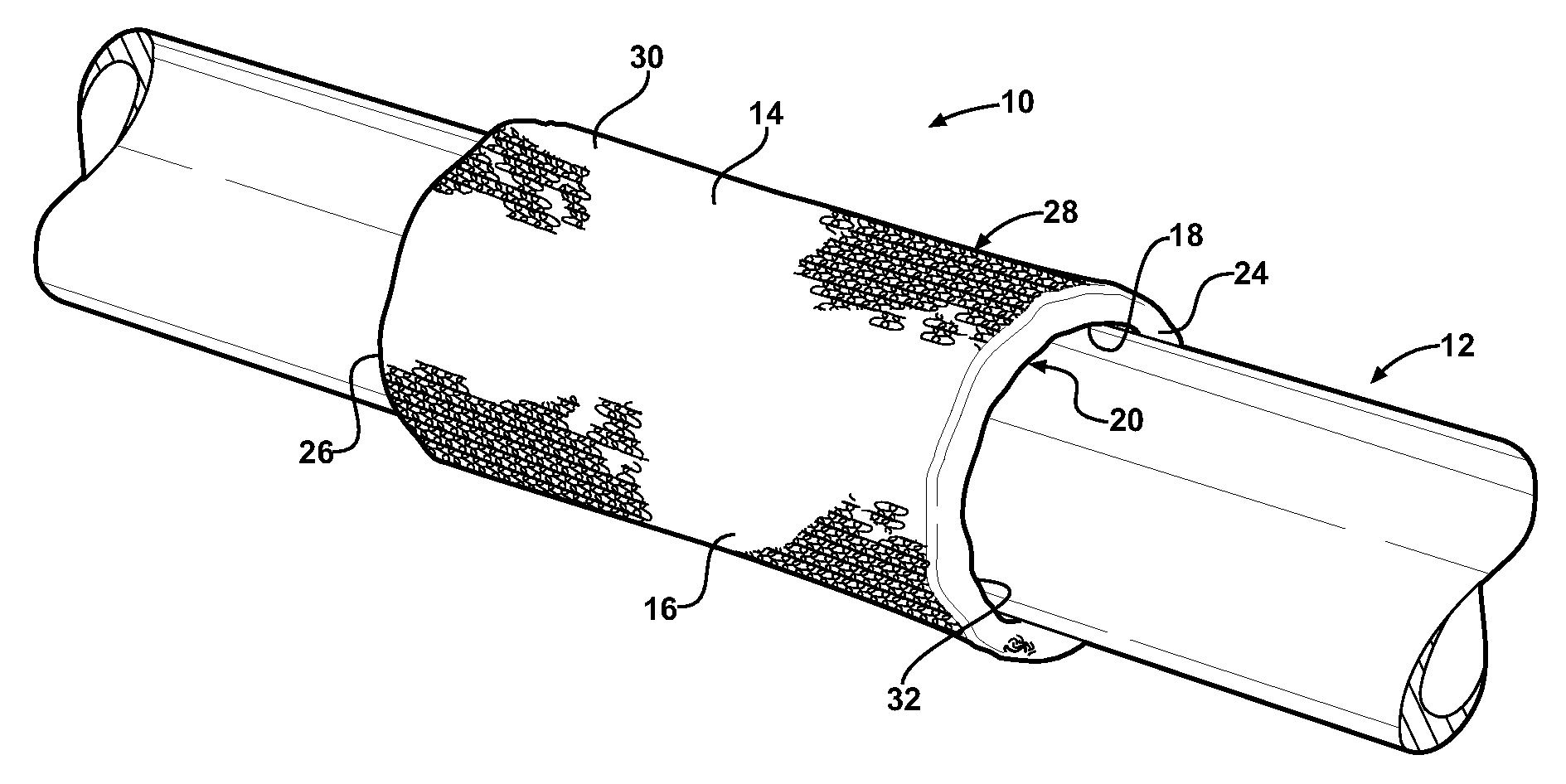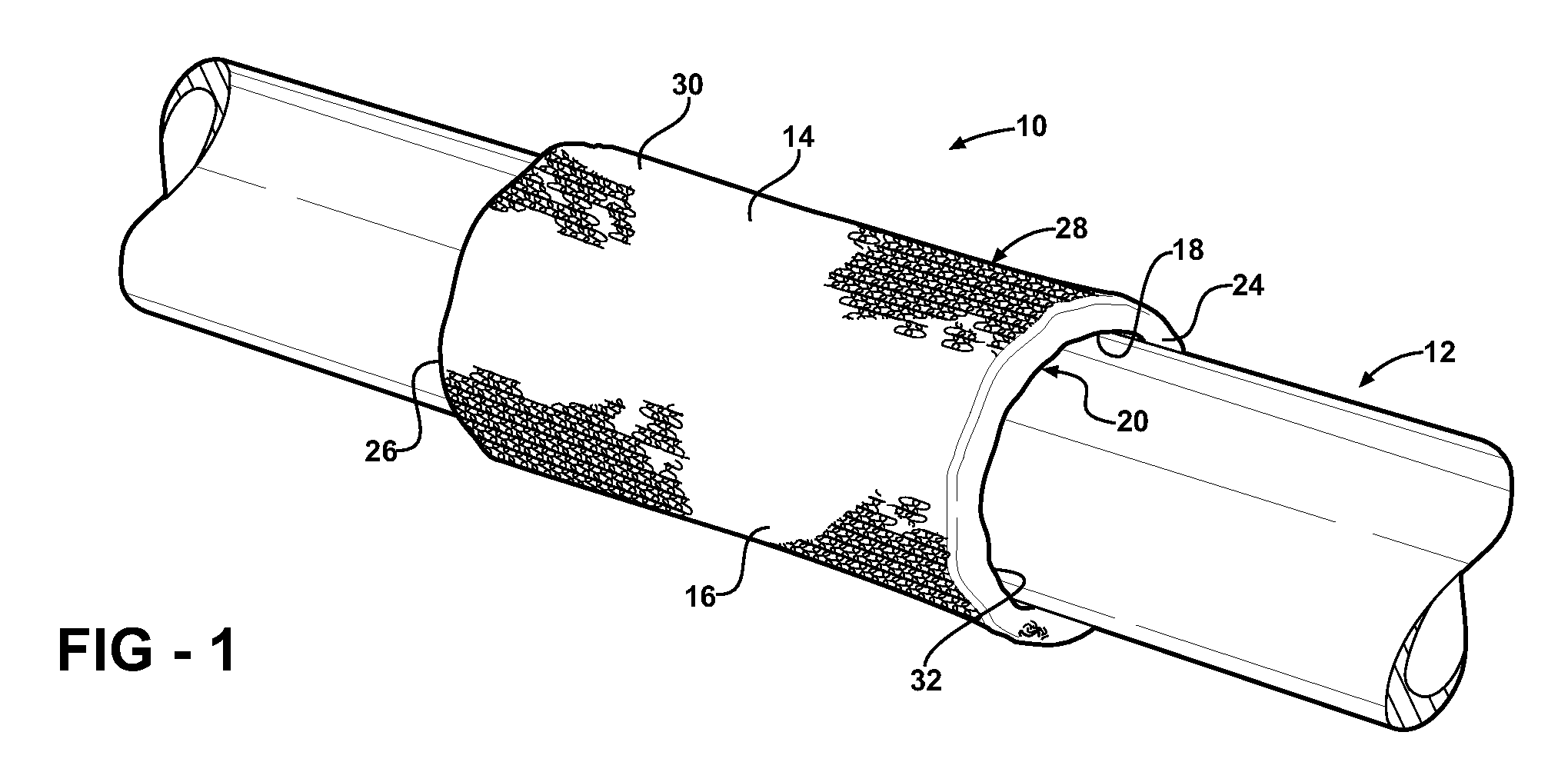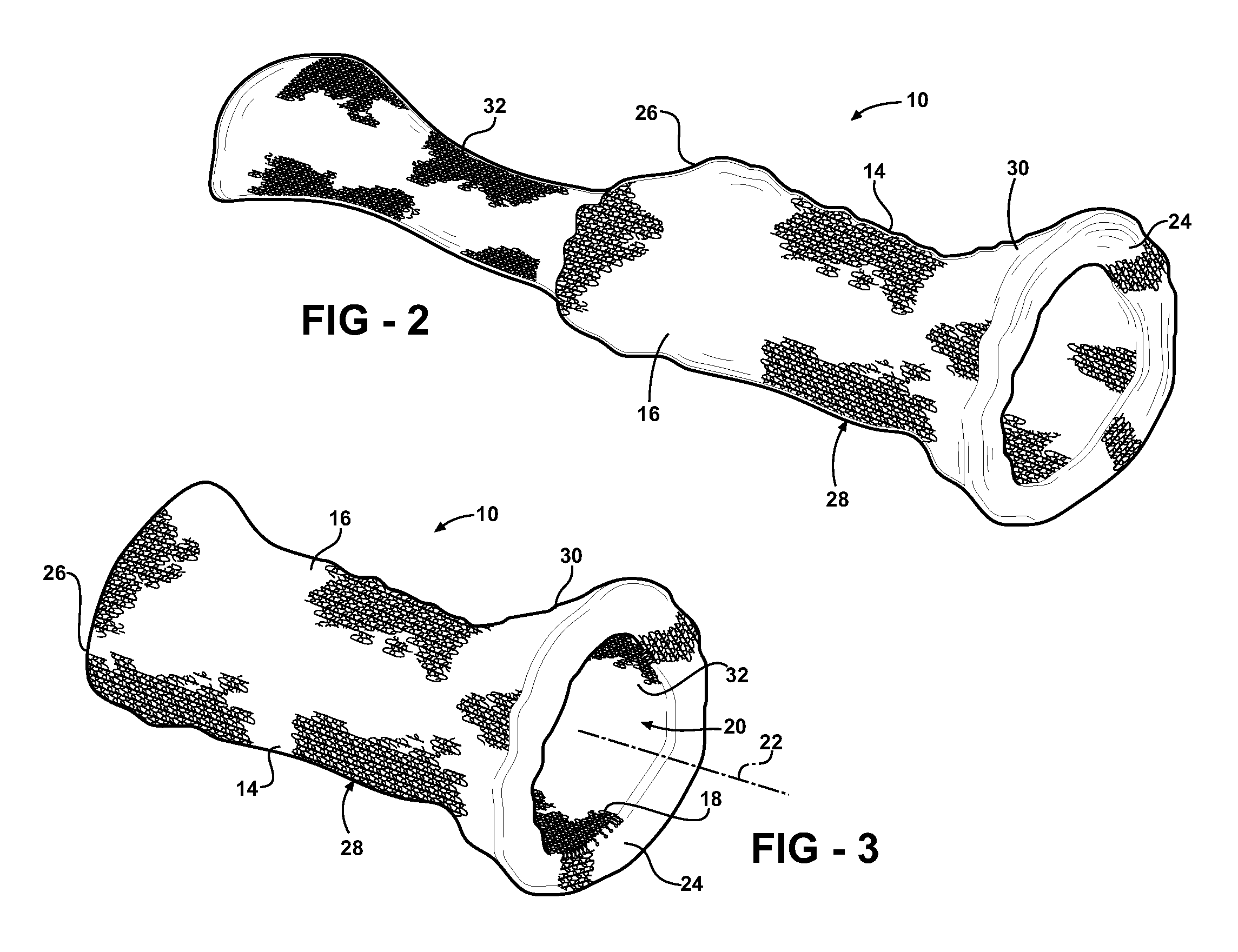Textile sleeve with high temperature abrasion resistant coating and methods of assembly, construction and curing thereof
a technology of abrasion resistance and textile sleeves, applied in the direction of weaving, pedestrian/occupant safety arrangements, vehicular safety arrangements, etc., can solve the problems of common prone to damage, tendency of heat resistant and/or fire retardant yarns to be prone to damage from abrasion, etc., to enhance protection, enhance flexibility and stretch, the effect of enhancing the degree of abrasion resistan
- Summary
- Abstract
- Description
- Claims
- Application Information
AI Technical Summary
Benefits of technology
Problems solved by technology
Method used
Image
Examples
Embodiment Construction
[0014]Referring in more detail to the drawings, FIGS. 1-3 show a tubular textile sleeve 10 constructed according to one embodiment of the invention. The sleeve 10 protects and provides a circumferential barrier to radiant heat, thereby providing protection to elongate members within the sleeve, or to components external to the sleeve 10 should the sleeve 10 be used to surround a source of radiant heat, such as an exhaust pipe 12, for example. By blocking the heat from radiating outwardly from the exhaust pipe 12, any nearby components, e.g. wire harnesses, sensors, and other heat sensitive components (not shown), are protected against damage from radiant heat. The textile sleeve 10 has a plurality of yarns interlaced with one another to form a wall 14, wherein the wall 14 can be formed to provide a closed (circumferentially continuous wall) or open tubular wall (having overlapping opposite edges extending generally parallel to a longitudinal axis 22 of the sleeve 10). The wall 14 ha...
PUM
| Property | Measurement | Unit |
|---|---|---|
| Temperature | aaaaa | aaaaa |
| Temperature | aaaaa | aaaaa |
Abstract
Description
Claims
Application Information
 Login to View More
Login to View More - R&D
- Intellectual Property
- Life Sciences
- Materials
- Tech Scout
- Unparalleled Data Quality
- Higher Quality Content
- 60% Fewer Hallucinations
Browse by: Latest US Patents, China's latest patents, Technical Efficacy Thesaurus, Application Domain, Technology Topic, Popular Technical Reports.
© 2025 PatSnap. All rights reserved.Legal|Privacy policy|Modern Slavery Act Transparency Statement|Sitemap|About US| Contact US: help@patsnap.com



